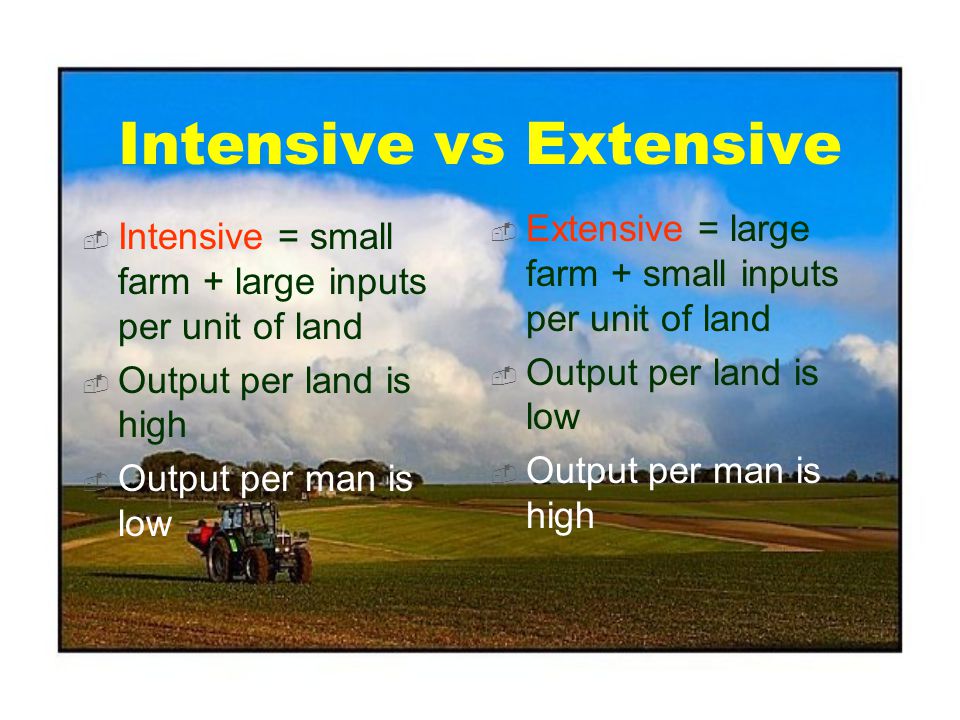Agriculture is a cornerstone of human civilization, providing food and resources for societies throughout history. Two primary farming methods, extensive and intensive agriculture, have emerged as distinct approaches to meet the demands of growing populations. Let’s delve into the key differences between these two methods and explore their implications.
Defining Extensive Agriculture:
Extensive agriculture involves cultivating large areas of land with relatively low inputs per unit of land. This method is often adopted in regions where land is abundant, and population density is low. In extensive agriculture, the focus is on maximizing land use, and the scale of production typically outweighs the intensity of inputs. This approach is well-suited for crops or livestock that require ample space and minimal intervention.

Key Characteristics of Extensive Agriculture:
- Land Usage: Extensive agriculture covers vast expanses of land, with individual plots often being larger in size.
- Low Inputs: Inputs such as labor, fertilizers, and pesticides are used in moderation compared to the size of the land.
- Mechanization: Extensive agriculture may still incorporate mechanization, but the scale of machinery usage is generally lower compared to intensive agriculture.
- Crop Variety: Extensive agriculture tends to focus on a limited range of staple crops or livestock breeds that thrive in the given environment.
- Environmental Impact: While extensive agriculture may have a lower immediate impact on the environment, improper land management can lead to soil erosion and degradation over time.
Exploring Intensive Agriculture:
Intensive agriculture, on the other hand, involves maximizing production on a smaller land area through increased inputs and careful management. This method is prevalent in areas with limited arable land and higher population densities. Intensive agriculture relies on advanced techniques, technologies, and practices to achieve high yields and meet the demands of a growing population.
Key Characteristics of Intensive Agriculture:
- Higher Inputs: Intensive agriculture requires significant inputs of labor, fertilizers, pesticides, and advanced machinery.
- Smaller Land Area: Production takes place on smaller plots of land, often utilizing techniques like crop rotation and vertical farming.
- Crop Diversity: Intensive agriculture may involve growing a diverse range of crops, often in rotation, to optimize soil health and minimize pest pressure.
- High Yields: The goal of intensive agriculture is to achieve maximum yields from a limited land area, contributing to food security.
- Environmental Considerations: Intensive agriculture can have a higher environmental impact due to increased chemical usage and potential soil depletion if not managed sustainably.
Balancing Extensive and Intensive Approaches:
Both extensive and intensive agriculture have their strengths and challenges. The choice of method depends on factors such as available land, population density, technological capabilities, and environmental considerations. Many regions adopt a combination of both methods to achieve a balance between sustainable resource use and meeting food demand.
Extensive and intensive agriculture are two distinct farming methods that cater to different landscapes and population densities. Extensive agriculture focuses on maximizing land usage with lower inputs, while intensive agriculture aims to achieve high yields on smaller land areas through increased inputs and advanced practices. Understanding these differences is essential for making informed decisions about sustainable food production and resource management in a rapidly changing world.
